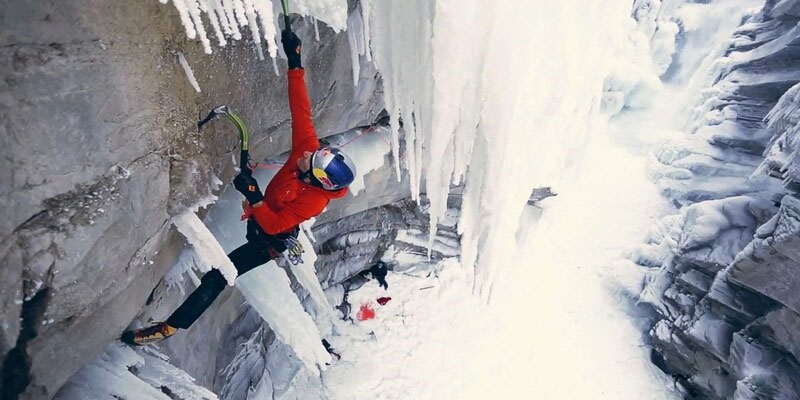101 Guide to Ice climbing is an exciting and difficult activity involving specialized equipment and skills to scale ice structures. It is a unique way to enjoy the splendor and majesty of nature, and it needs a skill level that is distinct from other climbing disciplines. This article offers an overview of ice-climbing equipment, tactics, and safety precautions. This guide's first part will discuss the essential equipment required for ice climbing. This contains critical equipment such as ice axes, crampons, harnesses, and ropes. We will also address the significance of choosing the appropriate equipment and how to maintain and care for it.
The second segment will concentrate on the safety precautions required for this high-risk sport. Assessment of weather and terrain conditions, communication, and planning for rescue and emergency scenarios are covered. In addition, we will discuss the significance of employing solid anchoring and belaying procedures, as well as fall protection for oneself and others. The third and last session will offer an overview of methods for ice climbing. This comprises footwork, swing, resting, and the installation of ice screws—the significance of efficient mobility and balance when mounting ice formations will also be discussed.
Ice climbers may lower their risk of injury and improve their chances of success by adhering to the rules and practices indicated in this book. Remember that ice climbing is physically and intellectually demanding, and taking safety precautions seriously is essential to ensure a successful and fun ascent.
Equipment

The following items are required for ice climbing:
- Ice Axes: Ice climbing requires two ice axes, one smaller for the uphill hand and the other bigger for the downhill hand. Sharp and well-maintained axes are necessary for a solid grip.
- Crampons: Crampons are spikes that connect to the bottom of boots to offer grip on ice. The crampons must properly fit the boots and be adjusted for the terrain.
- Harness: A harness is attached to the rope and worn around the waist and legs. The harness must fit well and be pleasant to wear for lengthy durations.
- A dynamic rope is utilized to give the climber support and safety. The rope must be robust, of the proper length, and capable of supporting the climber's weight.
- A belay device is used to manage the rope and safeguard the climber. The gadget must be compatible with the rope and provide a secure and dependable means of arresting a fall.
- A helmet is used to protect the head against falling ice and pebbles. The helmet must be properly sized and durable enough to withstand the shock of a probable fall.
Safety Measures
The following precautions are required for ice climbing:
- Weather: Ice climbing is best conducted in clear, cold circumstances. Avoid ice climbing during snowfall or strong winds since these circumstances may lead to unstable ice.
- Always inspect your climbing partner's equipment before the ascent. This includes inspecting the harness, ropes, and knots.
- Communication is essential while ice climbing. Signal clearly when it is time to ascend, halt, or rest.
- Anchoring: Secure anchors must be used at all times, and they must be able to hold the climber's and belayer's weight.
- Always be prepared for the possibility of falling. Use the correct belay method, and make sure the rope is constantly tight.
Techniques

The following skills are important for ice climbing:
- Footwork: Correct footwork is necessary for ice climbing. Use the front tips of the crampons to grasp the ice and distribute your body weight evenly between your feet.
- Swing: The ice axe must be swung properly to pierce the ice and create a strong grip. The swing must be strong and accurate.
- Resting is vital for conserving energy throughout the ascent. Establish a solid, comfortable posture and use your ice axes to support your weight.
- Ice screws are used to provide safety and support to climbers. They must be properly and securely positioned.
- Efficient Movement Ice climbing requires efficient movement. Use a continuous and steady pace, and prevent extraneous movement.
Conclusion
Ice climbing is a thrilling activity that involves physical and mental preparation, a technical understanding of ice formation, and safety considerations. With the proper gear, safety precautions, and methods, ice climbing can be a fascinating and gratifying experience. Taking safety precautions seriously and constantly practicing to enhance one's abilities and confidence is crucial. Always check the weather, speak with your partner, utilize solid anchoring and belaying procedures, and be prepared for a fall. By adhering to these standards and practicing consistently, you may enjoy the beauty and difficulty of ice climbing while ensuring the safety of others.

Daniel Jackson Mar 01, 2023
Ways To Avoid Altitude Sickness In Peru

Sean William Mar 07, 2023
Things To Do In St. Petersburg

Daniel Jackson Feb 19, 2023
Things To Do in Winnipeg

Daniel Jackson Mar 01, 2023
Authentic Slow Travel Tuscany Tours of Italy

Juliana Daniel Feb 26, 2023
Everything About Costa Rica's Amazing Rivers

Juliana Daniel Feb 16, 2023
Why Destin, Florida, Is Best To Visit In The Fall

Daniel Jackson Mar 02, 2023
Comprehensive Guide To Travelling In Kenya

Daniel Jackson Mar 01, 2023